

| Region rejsu : Karaiby |
| Firma : Azamara Cruises |
| Statek : Azamara Journey |
| Data rozpoczęcia : czw. 14 sty 2027 |
| Data zakończenia : śr. 17 lut 2027 |
| Liczba nocy : 34 nocy |
| Dzień | Data | Port | Wypłynięcie | Odpłynięcie |
|---|---|---|---|---|
| 1 | 14.01 czw. | Miami / USA | 17:00 | |
| 2 | 15.01 pt. | Dzień na morzu / Morze | ||
| 3 | 16.01 sob. | Dzień na morzu / Morze | ||
| 4 | 17.01 niedz. | Bandol / Francja | 10:30 | 18:00 |
| 5 | 18.01 pon. | Charlotte Amalie, ks. Święty Tomasz / Wyspy Dziewicze | 08:00 | 18:00 |
| 6 | 19.01 wt. | PHILIPSBURG / Anguilla | 08:00 | 22:00 |
| 7 | 20.01 śr. | Charlestown / Saint Kitts i Nevis | 08:00 | 18:00 |
| 8 | 21.01 czw. | św. Jana | 08:00 | 18:00 |
| 9 | 22.01 pt. | Saint-Pierre i Miquelon / Francja | 08:00 | 20:00 |
| 10 | 23.01 sob. | Port Elizabeth, Bequia / Saint Vincent i Grenadyny | 08:00 | 20:00 |
| 11 | 24.01 niedz. | Świętego Jerzego | 08:00 | 17:00 |
| 12 | 25.01 pon. | Bridgetown / Barbados | 06:00 | 18:00 |
| 13 | 26.01 wt. | Scarborough / Trinidad and Tobago | 08:00 | 16:00 |
| 14 | 27.01 śr. | Dzień na morzu / Morze | ||
| 15 | 28.01 czw. | dąb Królewski | 08:00 | 18:00 |
| 16 | 29.01 pt. | Dzień na morzu / Morze | ||
| 17 | 30.01 sob. | Belen / Brazylia | 08:00 | 17:00 |
| 18 | 31.01 niedz. | Dzień na morzu / Morze | ||
| 19 | 1.02 pon. | Dzień na morzu / Morze | ||
| 20 | 2.02 wt. | Recife / Brazylia | 13:00 | 22:00 |
| 21 | 3.02 śr. | Dzień na morzu / Morze | ||
| 22 | 4.02 czw. | Salwador / Brazylia | 08:00 | 18:00 |
| 23 | 5.02 pt. | Dzień na morzu / Morze | ||
| 24 | 6.02 sob. | Armacao dos Buzios / Brazylia | 13:00 | 20:00 |
| 25 | 7.02 niedz. | Rio de Janeiro / Brazylia | 08:00 | |
| 26 | 8.02 pon. | Rio de Janeiro / Brazylia | ||
| 27 | 9.02 wt. | Rio de Janeiro / Brazylia | 17:00 | |
| 28 | 10.02 śr. | Parati / Brazylia | 08:00 | 18:00 |
| 29 | 11.02 czw. | Ilhabela / Brazylia | 08:00 | 18:00 |
| 30 | 12.02 pt. | Santos / Brazylia | 08:00 | 18:00 |
| 31 | 13.02 sob. | Dzień na morzu / Morze | ||
| 32 | 14.02 niedz. | Dzień na morzu / Morze | ||
| 33 | 15.02 pon. | Montevideo / Uruguay | 08:00 | 18:00 |
| 34 | 16.02 wt. | Buenos Aires / Argentyna | 08:00 | |
| 35 | 17.02 śr. | Buenos Aires / Argentyna | 09:00 |
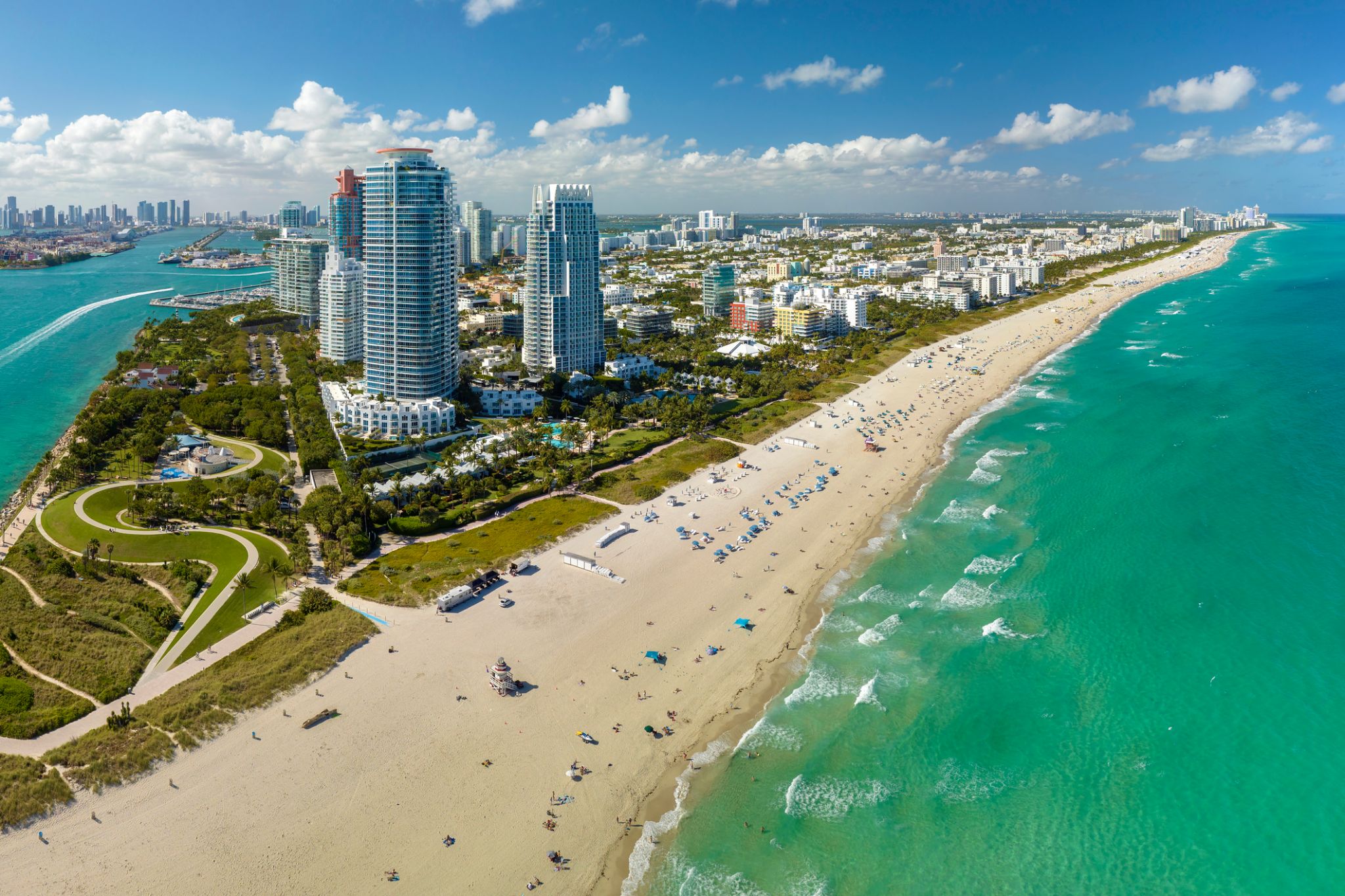
Miami, officially the City of Miami, is the cultural, economic and financial center of South Florida. Miami is the seat of Miami-Dade County, the most populous county in Florida. The city covers an area of about 56.6 square miles (147 km2), between the Everglades to the west and Biscayne Bay on the east; with a 2017 estimated population of 463,347, Miami is the sixth most densely populated major city in the United States. The Miami metropolitan area is home to 6.1 million people and the seventh-largest metropolitan area in the nation. Miami's metro area is the second-most populous metropolis in the southeastern United States and fourth-largest urban area in the U.S.
Miami is a major center, and a leader in finance, commerce, culture, media, entertainment, the arts, and international trade. The Miami Metropolitan Area is by far the largest urban economy in Florida and the 12th largest in the United States with a GDP of $344.9 billion as of 2017. In 2012, Miami was classified as an "Alpha−" level world city in the World Cities Study Group's inventory. In 2010, Miami ranked seventh in the United States and 33rd among global cities in terms of business activity, human capital, information exchange, cultural experience, and political engagement. In 2008, Forbes magazine ranked Miami "America's Cleanest City", for its year-round good air quality, vast green spaces, clean drinking water, clean streets, and citywide recycling programs. According to a 2009 UBS study of 73 world cities, Miami was ranked as the richest city in the United States, and the world's seventh-richest city in terms of purchasing power. Miami is nicknamed the "Capital of Latin America" and is the largest city with a Cuban-American plurality.
Greater Downtown Miami has one of the largest concentrations of international banks in the United States, and is home to many large national and international companies. The Civic Center is a major center for hospitals, research institutes, medical centers, and biotechnology industries. For more than two decades, the Port of Miami, known as the "Cruise Capital of the World", has been the number one cruise passenger port in the world. It accommodates some of the world's largest cruise ships and operations, and is the busiest port in both passenger traffic and cruise lines. Metropolitan Miami is also a major tourism hub in the southeastern U.S. for international visitors, ranking number two in the country after New York City.


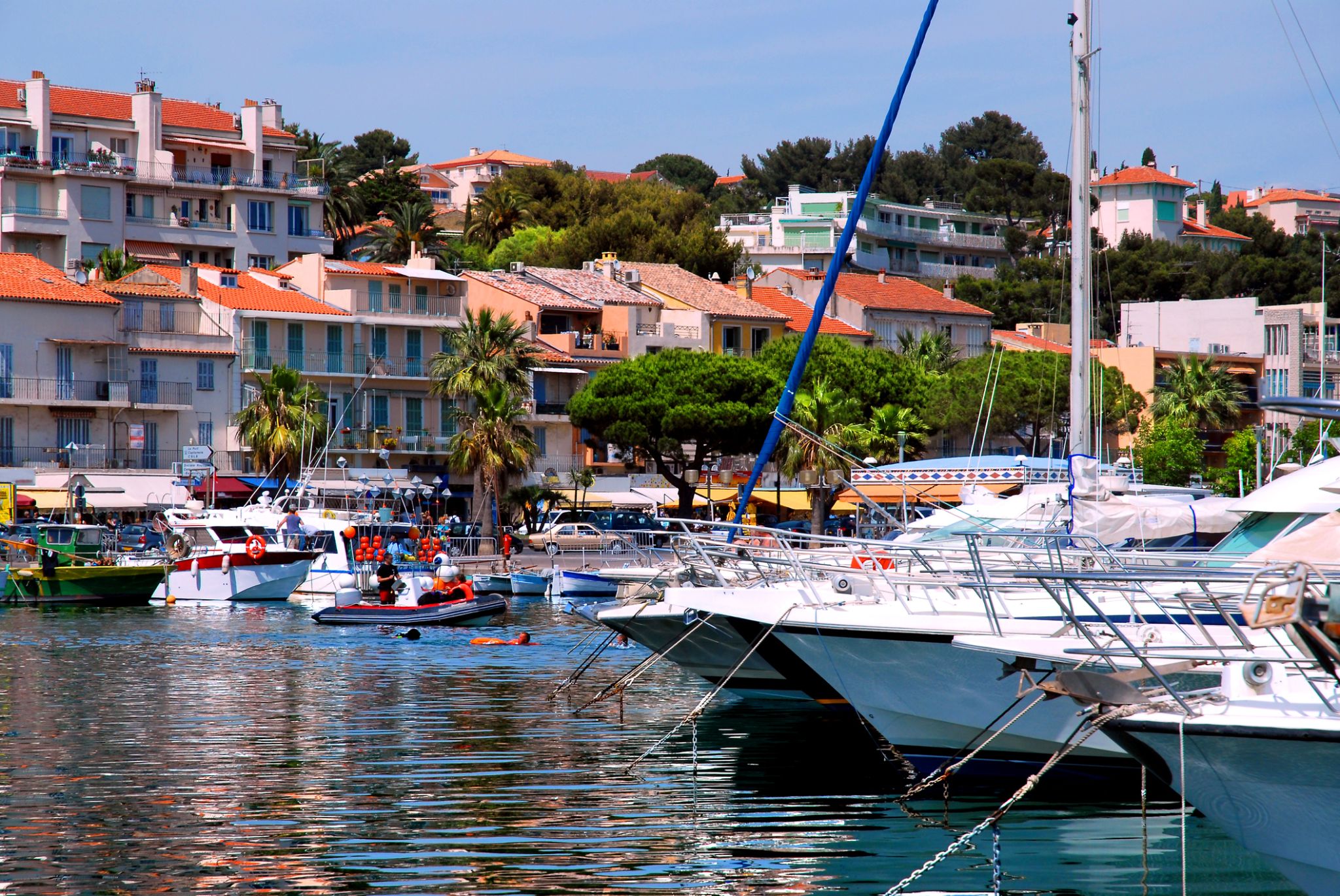
Bandol is a commune in Var department, Provence-Alpes-Côte d'Azur region, southeastern France. Bandol and the seat of its eponymous commune, was founded in 1595 and built around a small military fort.
The Bandol wine region, located near the coast east of Marseille and Cassis, is one of Provence’s most internationally recognized wine regions. Built around the village of Bandol, west of Toulon, the Bandol AOC covers the production of 8 communes with silicon & limestone soils. Those soils and the warm, coastal climate are ideally suited for the late ripening Mourvèdre grape which is the major variety of the region. For both the red and rosé wines, Mourvèdre must account for at least 50% of the blend, though most producers will use significantly more, with Grenache & Cinsaut usually filling out the rest of the wine’s composition.
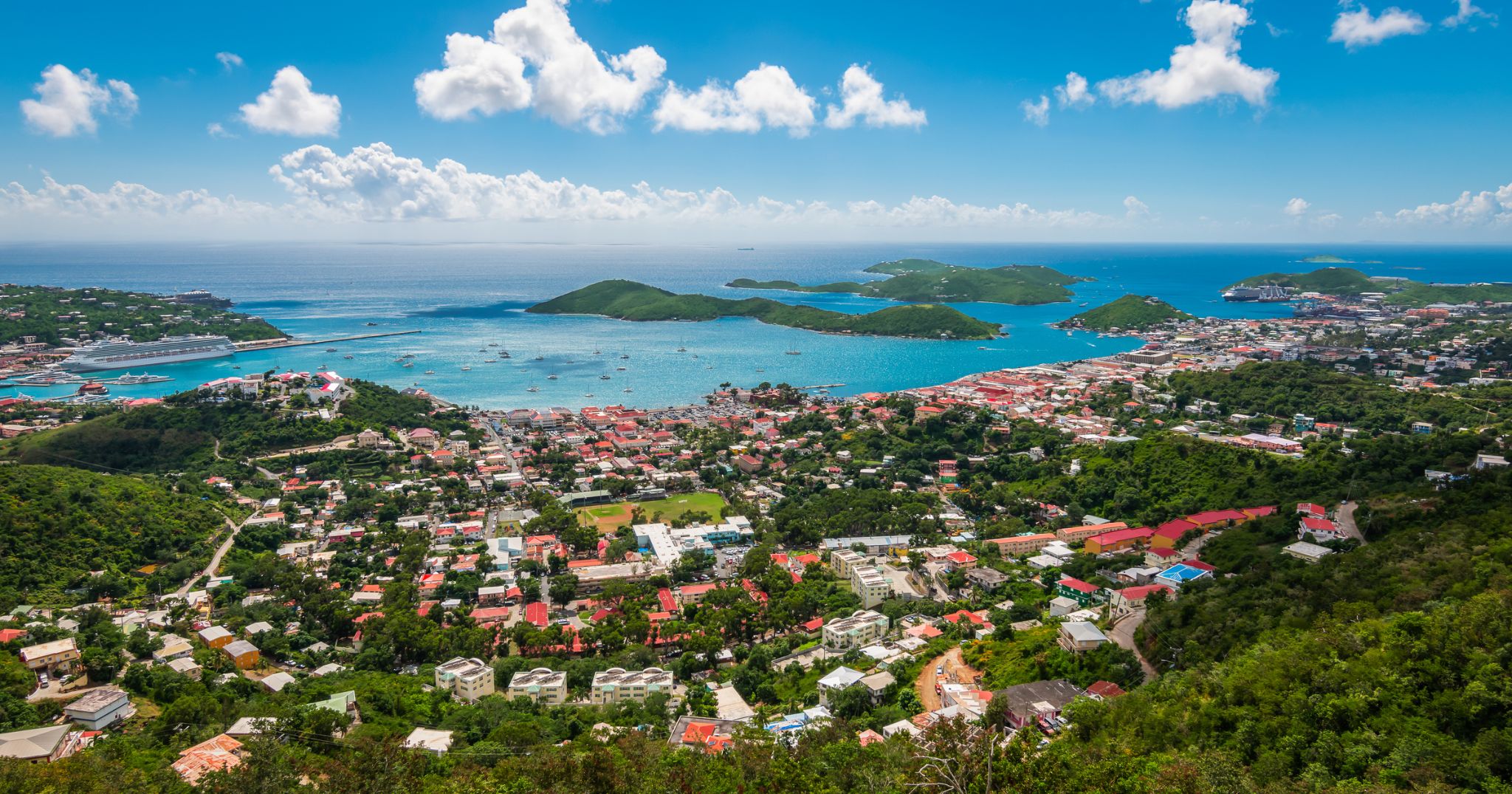


Charlestown

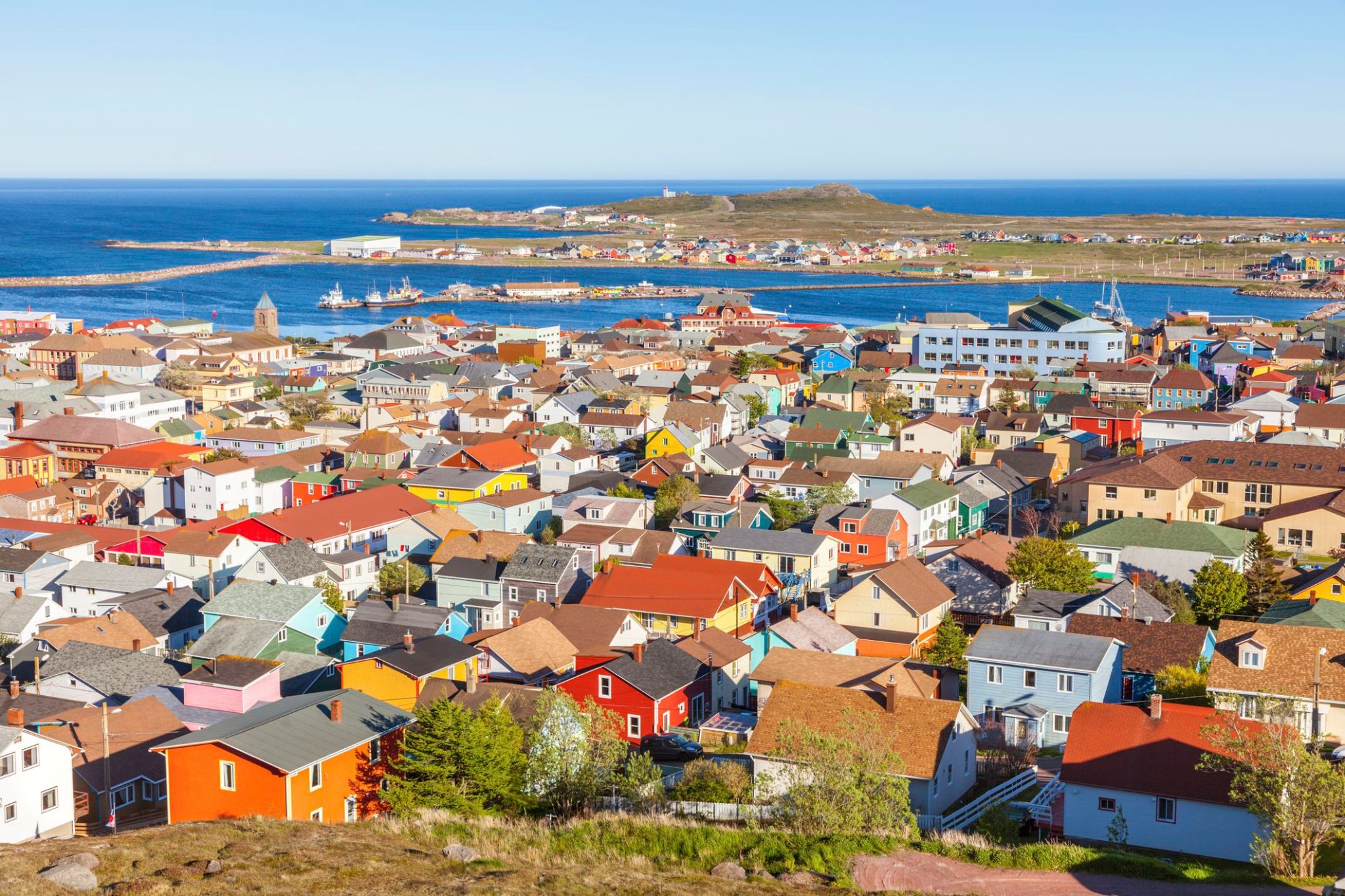
Saint-Pierre i Miquelon to maleńki francuski archipelag położony u wybrzeży kanadyjskiej prowincji Nowa Fundlandia i Labrador. To ostatni skrawek francuskiego terytorium w Ameryce Północnej, gdzie obowiązuje euro, działają francuskie przepisy, a ulice przypominają Europę — z piekarniami, bagietkami i kolorowymi domkami na tle surowego północnoatlantyckiego krajobrazu.
Archipelag składa się z dwóch głównych wysp — tętniącego życiem Saint-Pierre oraz dzikszego i bardziej przestronnego Miquelon. Turyści mogą tu obserwować migracje wielorybów, wędrować po szlakach lub podróżować rowerem i na rakietach śnieżnych. Ciekawostka: w czasach prohibicji w USA Saint-Pierre był ważnym punktem przemytniczym alkoholu — dziś można o tym dowiedzieć się w lokalnym muzeum.
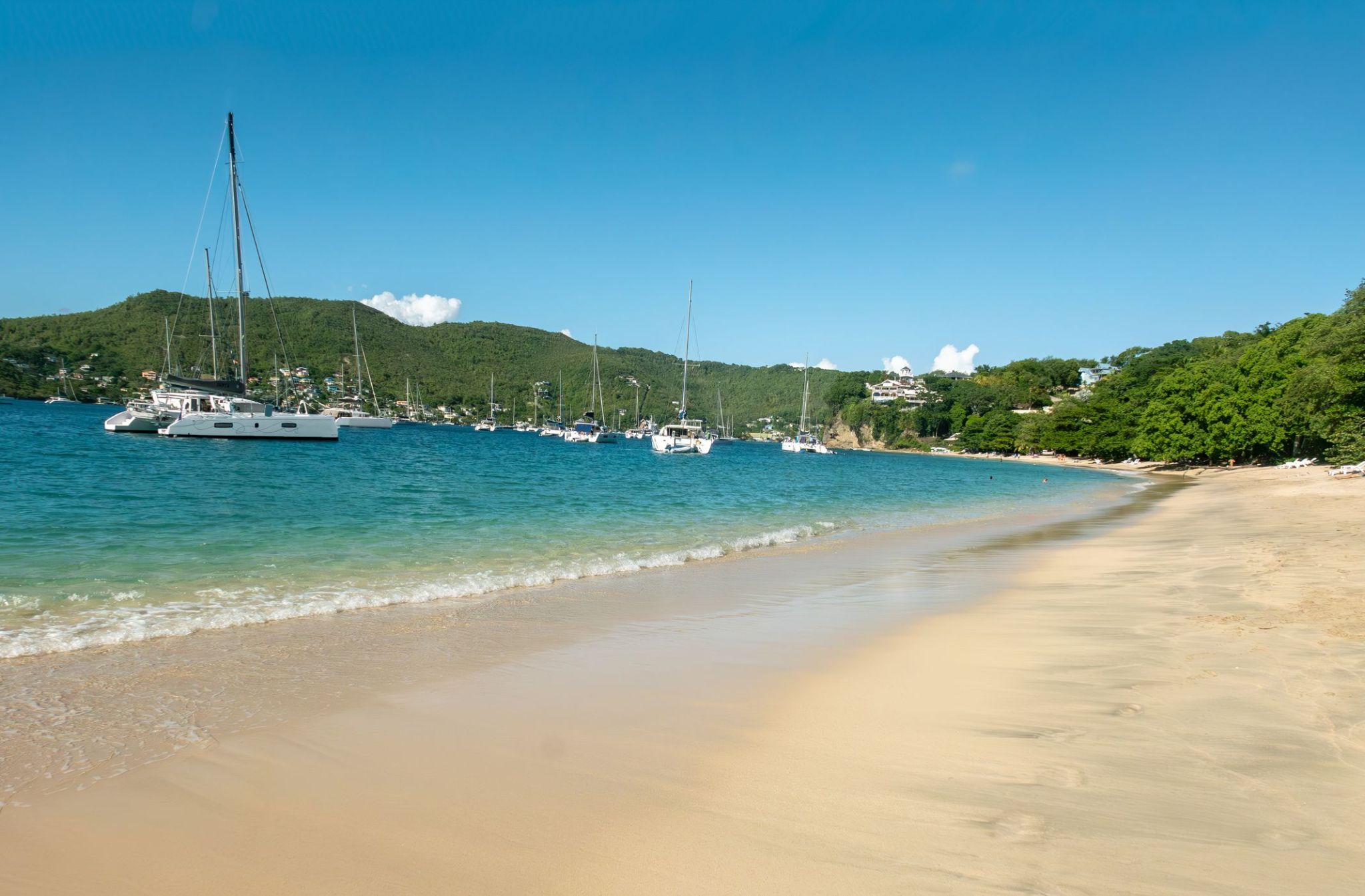
Podróżni poszukujący spokoju i autentycznego karaibskiego klimatu znajdą schronienie na brzegach Port Elizabeth, Bequia. To malownicze miasteczko portowe oferuje przytulne uliczki z kolorowymi domami kolonialnymi oraz przyjazną atmosferę, która zachowuje ducha prawdziwego życia na wyspie. Tutaj można poczuć rytmy tradycyjnej muzyki, spróbować świeżych owoców morza i cieszyć się spokojnym stylem życia.
Z dala od tłumów turystów Port Elizabeth, Bequia słynie ze swoich złotych piaszczystych plaż i krystalicznie czystych turkusowych wód, idealnych do pływania i nurkowania z rurką. Otaczająca przyroda zachęca do odkrywania zielonych wzgórz i tropikalnych lasów, a miejscowi rzemieślnicy oferują unikalne pamiątki odzwierciedlające kulturowe dziedzictwo wyspy. To idealne miejsce dla tych, którzy chcą połączyć wypoczynek z zanurzeniem w autentyczną karaibską atmosferę.

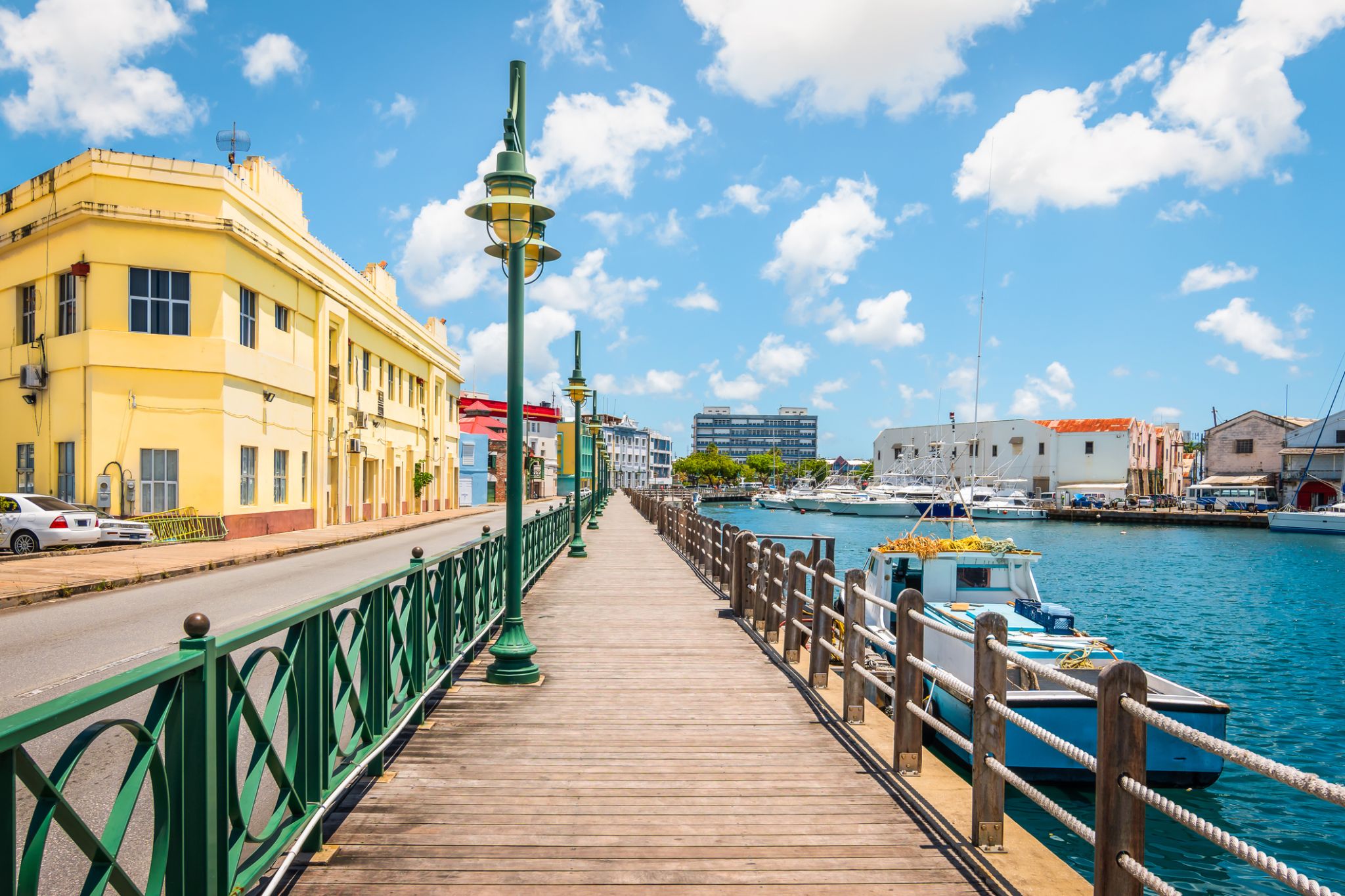
Bridgetown to stolica i największe miasto Barbadosu. Dawniej znane jako „Miasto św. Michała” (The Town of Saint Michael), obszar Greater Bridgetown znajduje się w parafii św. Michała. Miejscowi czasami nazywają je „Miastem” (The City), ale najczęściej po prostu „Town”. W 2014 roku populacja aglomeracji wynosiła około 110 000 mieszkańców.
Port Bridgetown znajduje się w zatoce Carlisle (13.106°N 59.632°W) na południowo-zachodnim wybrzeżu wyspy. Części obszaru Greater Bridgetown, ogólnie zdefiniowane przez obwodnicę (ABC Highway), leżą blisko granic sąsiednich parafii Christ Church i St. James. Międzynarodowe lotnisko Grantley Adams znajduje się 16 kilometrów na południowy wschód od centrum Bridgetown i oferuje codzienne loty do głównych miast Wielkiej Brytanii, USA, Kanady i Karaibów. Obecnie nie ma już lokalnych władz miejskich; Bridgetown jest okręgiem wyborczym w parlamencie krajowym. W latach 50. i 60. XX wieku, podczas istnienia Federacji Brytyjskich Terytoriów Indyjskich, Bridgetown było jednym z trzech miast rozważanych jako możliwa stolica federacji.
Obecna lokalizacja miasta została założona przez angielskich osadników w 1628 roku; wcześniejsza osada pod nadzorem Sir Williama Courtena znajdowała się w St. James Town. Bridgetown jest ważnym celem turystycznym na Karaibach, a także znaczącym centrum finansowym, informatycznym, konferencyjnym i portem dla statków wycieczkowych. 25 czerwca 2011 roku „Historyczne Bridgetown i jego garnizon” zostały wpisane na listę światowego dziedzictwa UNESCO.
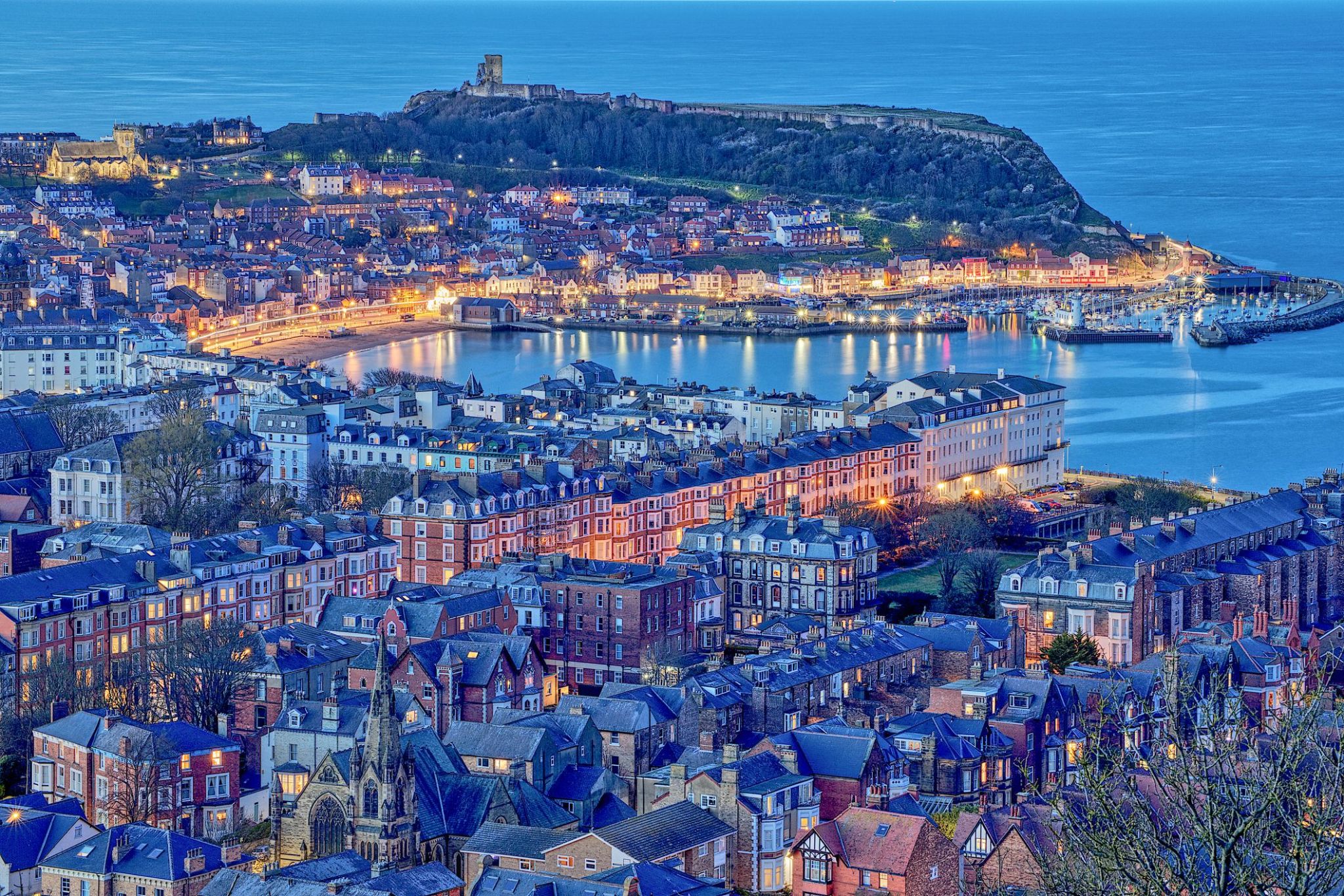
Scarborough (Tobago) to urokliwe miasteczko położone na wschodnim wybrzeżu wyspy Tobago na Morzu Karaibskim. Jako stolica wyspy, stanowi centrum życia kulturalnego i historycznego regionu. Miasto słynie z malowniczych uliczek, tętniących życiem targowisk i zabytkowych budynków, które harmonijnie współistnieją z nowoczesną architekturą. Do najważniejszych atrakcji należy kościół św. Anny z 1770 roku, będący ważnym elementem dziedzictwa miasta. Popularnością cieszy się również lokalny targ, na którym można kupić świeże owoce, przyprawy i rękodzieło.
Poza bogactwem kulturowym Scarborough oferuje piękne widoki przyrodnicze. W pobliżu znajdują się plaże z białym piaskiem i krystalicznie czystą wodą, idealne do kąpieli i nurkowania. Szczególnie popularna wśród turystów jest zatoka Pleasant, znana z pięknych krajobrazów i podwodnego świata. Scarborough to doskonała baza wypadowa do odkrywania rezerwatów przyrody Tobago i aktywnego wypoczynku.






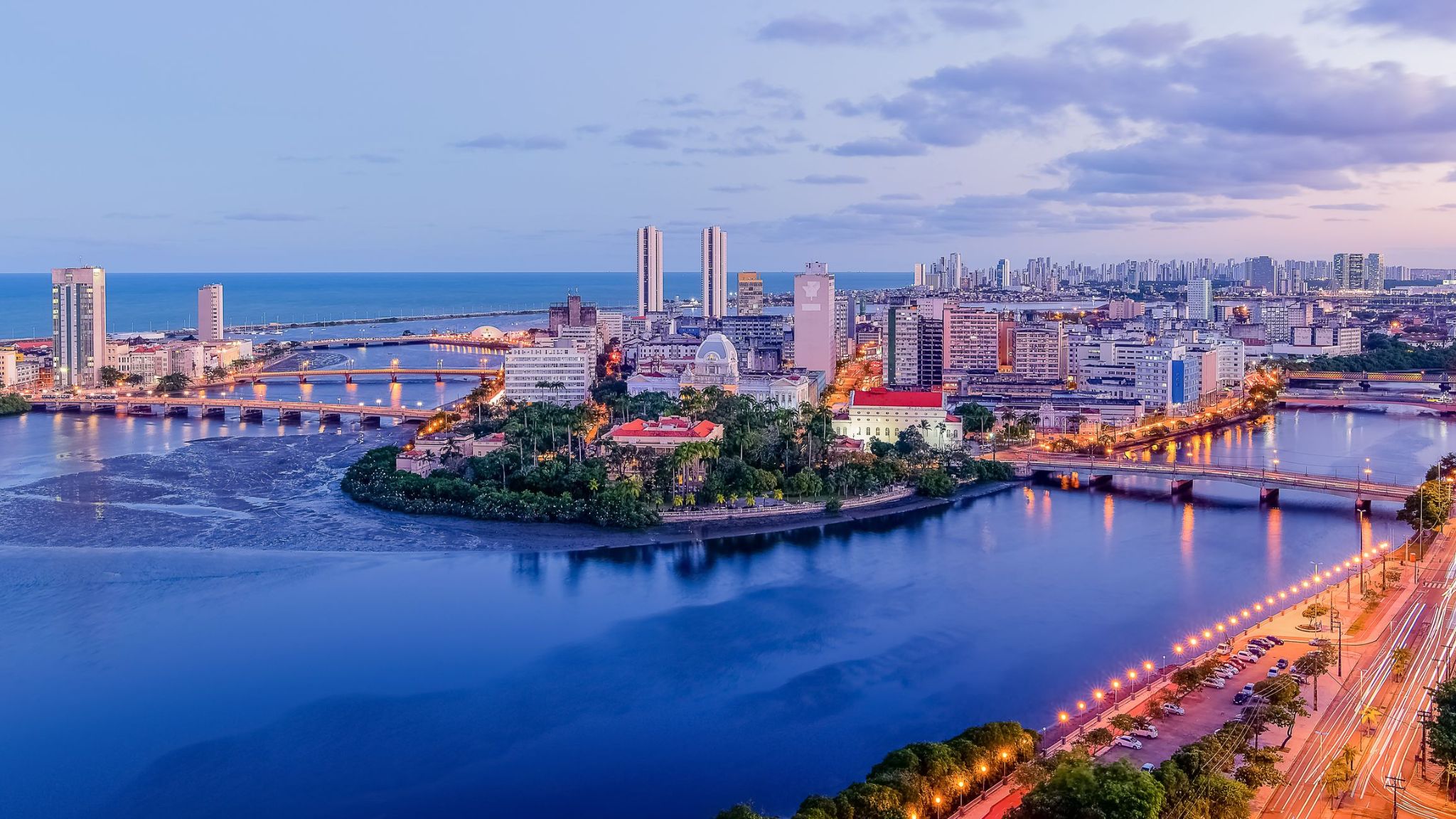
Recife: Tropikalna Wenecja Brazylii
Recife, stolica stanu Pernambuco w północno-wschodniej Brazylii, znane jest ze swojej sieci kanałów, mostów i rzek, dzięki czemu nazywane jest „brazylijską Wenecją”. Miasto łączy kolonialną architekturę z nowoczesnymi drapaczami chmur i tętniącą życiem kulturą, widoczną podczas karnawałów, w muzyce frevo i rytmach maracatu. Zabytkowa dzielnica Recife Antigo zachowuje portugalskie dziedzictwo wąskimi uliczkami, kościołami i starymi budynkami.
Recife słynie także z plaż, zwłaszcza Boa Viagem, gdzie biały piasek i palmy kontrastują z miejską panoramą. Turyści mogą zwiedzać muzea, jak Instytut Ricardo Brennanda z kolekcją broni i sztuki, lub odwiedzić pobliską kolonialną miejscowość Olinda, wpisaną na listę UNESCO. To idealne miejsce dla osób poszukujących kultury, relaksu nad morzem i autentycznej brazylijskiej atmosfery.

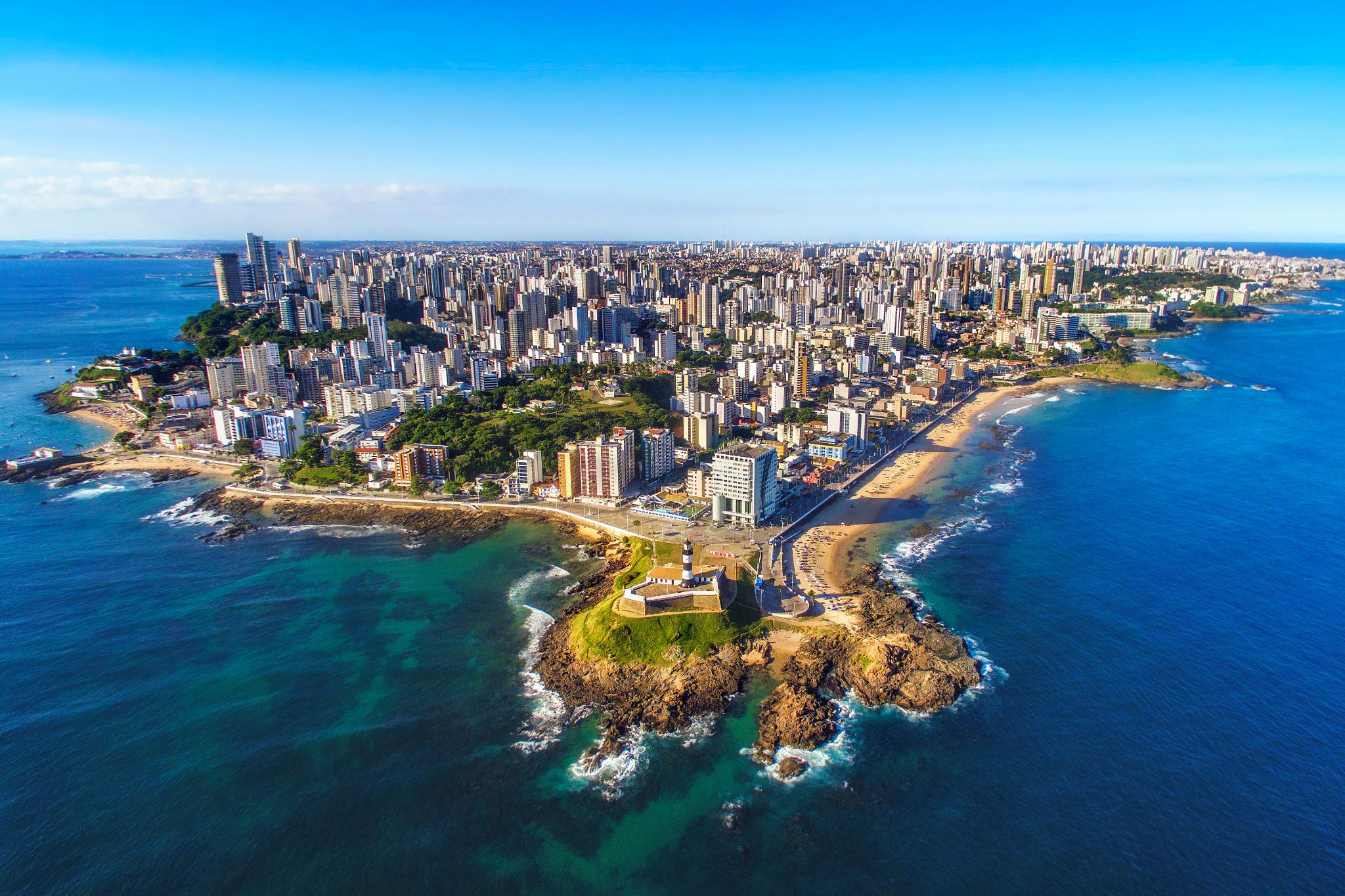
Salvador is the capital of Bahia state and was formerly the first capital of Brazil. Salvador is known for its endless number of churches, as well as for being a land of majestic fortresses. After visiting these places, it is also worth taking a look at the Chapada Diamantina National Park – the most interesting natural park in Brazil. In Salvador, there reigns an atmosphere of joy, revelry, and holidays – this is due to the fact that the local population was influenced by Africa. In Salvador, you can always admire the natural beauty of this area. You will be enchanted by the sensuality of this land, and you will be able to discover a piece of its mysterious power.

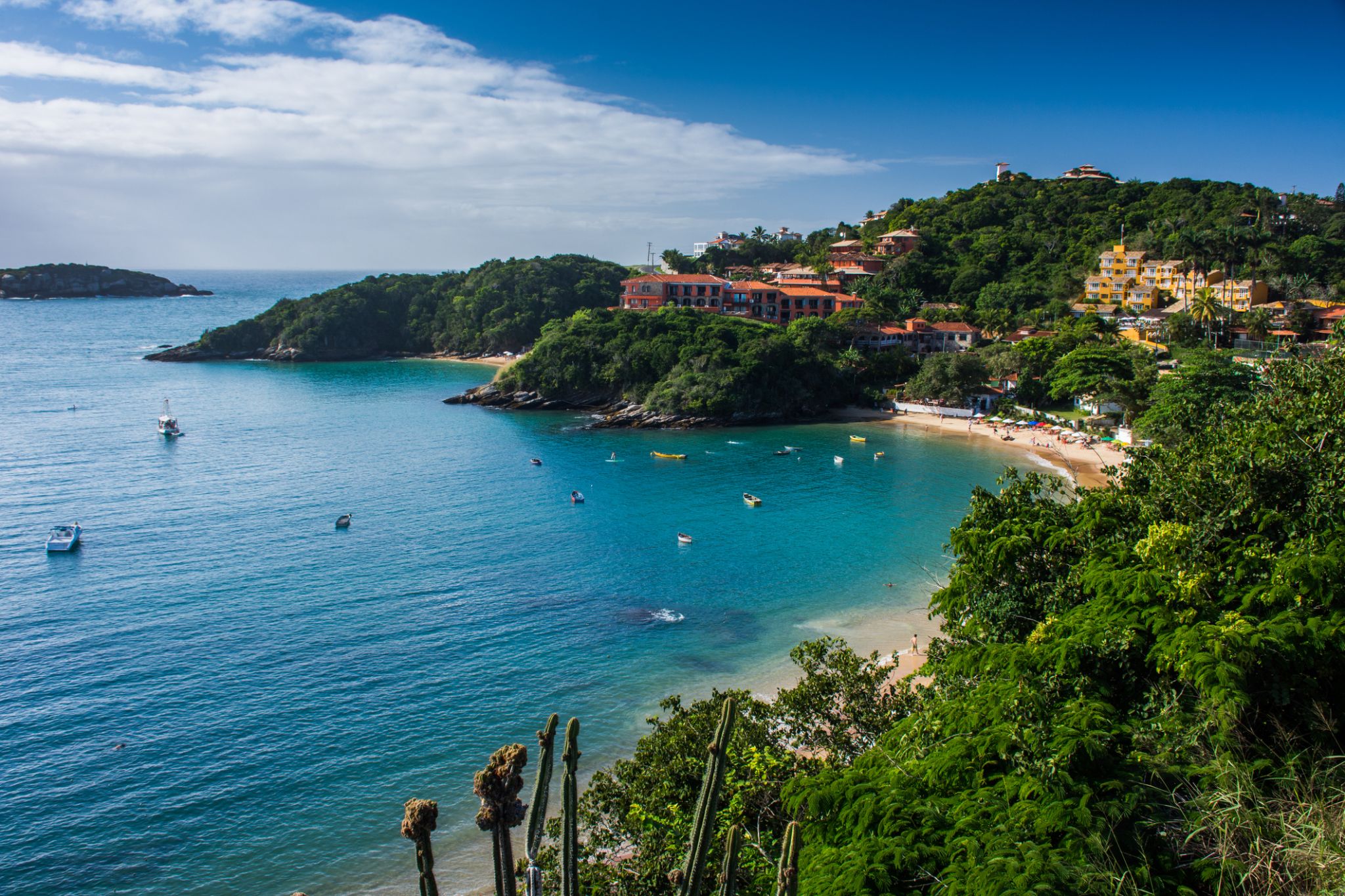
Armação dos Búzios, często nazywane po prostu Búzios, to nadmorskie miasteczko i gmina w stanie Rio de Janeiro w Brazylii. W 2012 roku liczyło 23 463 mieszkańców i zajmowało powierzchnię 69 km². Dziś Búzios jest popularnym miejscem wypoczynku, szczególnie wśród Brazylijczyków i Argentyńczyków.
Na początku XX wieku Búzios było niemal nieznaną wioską rybacką. Pozostało takie aż do 1964 roku, kiedy to francuska aktorka Brigitte Bardot odwiedziła Búzios. Od tego czasu miejsce to stało się popularne wśród wyższych sfer Rio de Janeiro, pragnących uciec od miejskiego zgiełku i cieszyć się ponad 23 plażami, które oferuje półwysep. Miasto rozwinęło się w międzynarodowy cel turystyczny.
Dziś półwysep oferuje spokój, bezpośredni kontakt z naturą i malownicze widoki. Plaże po zachodniej stronie oferują spokojne, przejrzyste wody, podczas gdy te po wschodniej stronie, zwrócone ku otwartemu morzu, są bardziej dzikie i przyciągają surferów oraz entuzjastów sportów wodnych. Azeda, Ferradura, João Fernandes i Armação to jedne z najpopularniejszych plaż w mieście. Wieczorem główna ulica Búzios, Rua das Pedras, oferuje aktywne życie nocne oraz szeroki wybór sklepów i restauracji.
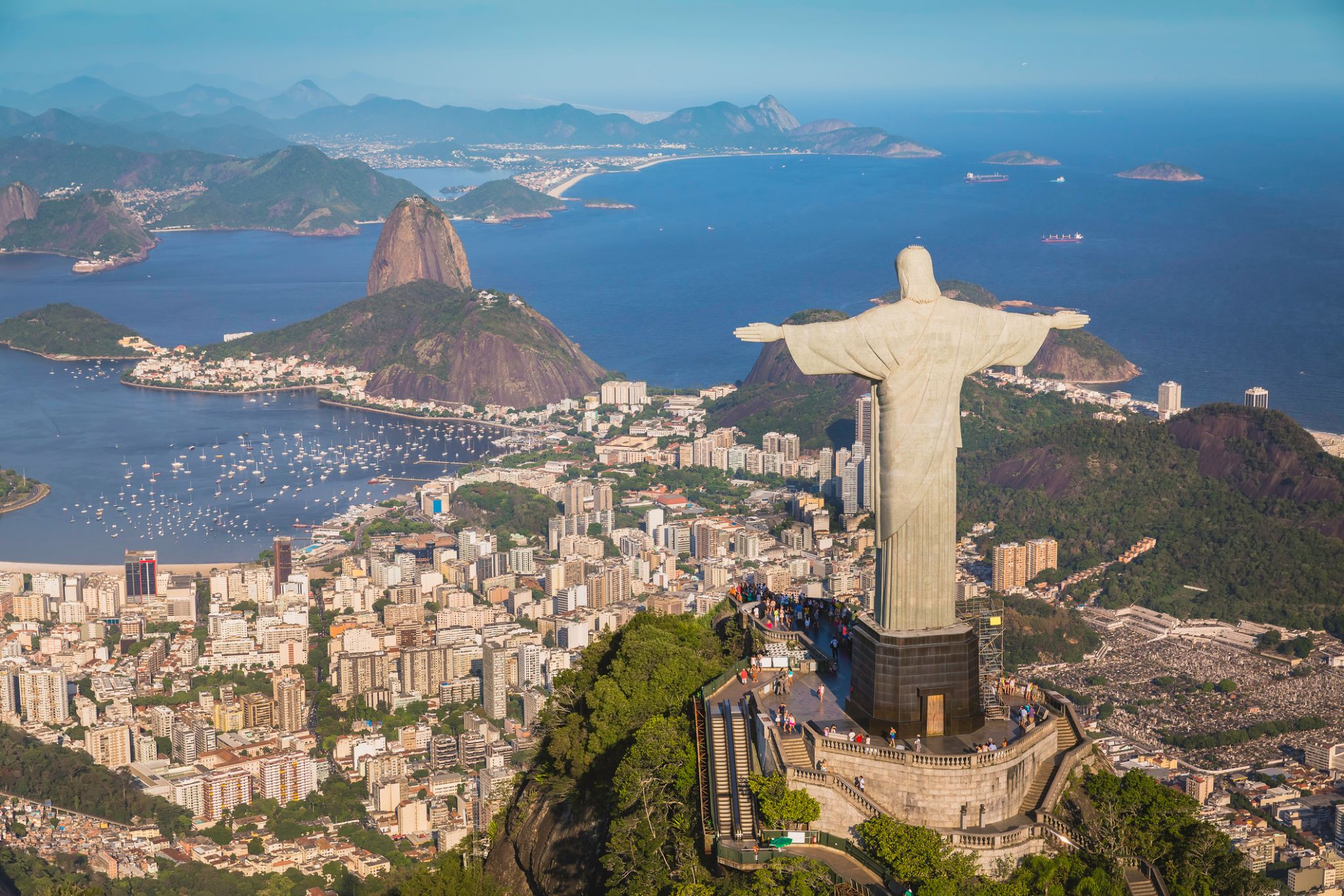
Rio de Janeiro is the second-most populous municipality in Brazil and the sixth-most populous in the Americas. The metropolis is anchor to the Rio de Janeiro metropolitan area, the second-most populous metropolitan area in Brazil and sixth-most populous in the Americas. Rio de Janeiro is the capital of the state of Rio de Janeiro, Brazil's third-most populous state. Part of the city has been designated as a World Heritage Site, named "Rio de Janeiro: CariocaLandscapes between the Mountain and the Sea", by UNESCO on 1 July 2012 as a Cultural Landscape.
Founded in 1565 by the Portuguese, the city was initially the seat of the Captaincy of Rio de Janeiro, a domain of the Portuguese Empire. Later, in 1763, it became the capital of the State of Brazil, a state of the Portuguese Empire. In 1808, when the Portuguese Royal Court transferred itself from Portugal to Brazil, Rio de Janeiro became the chosen seat of the court of Queen Maria I of Portugal, who subsequently, in 1815, under the leadership of her son, the Prince Regent, and future King João VI of Portugal, raised Brazil to the dignity of a kingdom, within the United Kingdom of Portugal, Brazil, and Algarves. Rio stayed the capital of the pluricontinental Lusitanian monarchy until 1822, when the War of Brazilian Independence began. This is one of the few instances in history that the capital of a colonising country officially shifted to a city in one of its colonies. Rio de Janeiro subsequently served as the capital of the independent monarchy, the Empire of Brazil, until 1889, and then the capital of a republican Brazil until 1960 when the capital was transferred to Brasília.

Rio de Janeiro is the second-most populous municipality in Brazil and the sixth-most populous in the Americas. The metropolis is anchor to the Rio de Janeiro metropolitan area, the second-most populous metropolitan area in Brazil and sixth-most populous in the Americas. Rio de Janeiro is the capital of the state of Rio de Janeiro, Brazil's third-most populous state. Part of the city has been designated as a World Heritage Site, named "Rio de Janeiro: CariocaLandscapes between the Mountain and the Sea", by UNESCO on 1 July 2012 as a Cultural Landscape.
Founded in 1565 by the Portuguese, the city was initially the seat of the Captaincy of Rio de Janeiro, a domain of the Portuguese Empire. Later, in 1763, it became the capital of the State of Brazil, a state of the Portuguese Empire. In 1808, when the Portuguese Royal Court transferred itself from Portugal to Brazil, Rio de Janeiro became the chosen seat of the court of Queen Maria I of Portugal, who subsequently, in 1815, under the leadership of her son, the Prince Regent, and future King João VI of Portugal, raised Brazil to the dignity of a kingdom, within the United Kingdom of Portugal, Brazil, and Algarves. Rio stayed the capital of the pluricontinental Lusitanian monarchy until 1822, when the War of Brazilian Independence began. This is one of the few instances in history that the capital of a colonising country officially shifted to a city in one of its colonies. Rio de Janeiro subsequently served as the capital of the independent monarchy, the Empire of Brazil, until 1889, and then the capital of a republican Brazil until 1960 when the capital was transferred to Brasília.

Rio de Janeiro is the second-most populous municipality in Brazil and the sixth-most populous in the Americas. The metropolis is anchor to the Rio de Janeiro metropolitan area, the second-most populous metropolitan area in Brazil and sixth-most populous in the Americas. Rio de Janeiro is the capital of the state of Rio de Janeiro, Brazil's third-most populous state. Part of the city has been designated as a World Heritage Site, named "Rio de Janeiro: CariocaLandscapes between the Mountain and the Sea", by UNESCO on 1 July 2012 as a Cultural Landscape.
Founded in 1565 by the Portuguese, the city was initially the seat of the Captaincy of Rio de Janeiro, a domain of the Portuguese Empire. Later, in 1763, it became the capital of the State of Brazil, a state of the Portuguese Empire. In 1808, when the Portuguese Royal Court transferred itself from Portugal to Brazil, Rio de Janeiro became the chosen seat of the court of Queen Maria I of Portugal, who subsequently, in 1815, under the leadership of her son, the Prince Regent, and future King João VI of Portugal, raised Brazil to the dignity of a kingdom, within the United Kingdom of Portugal, Brazil, and Algarves. Rio stayed the capital of the pluricontinental Lusitanian monarchy until 1822, when the War of Brazilian Independence began. This is one of the few instances in history that the capital of a colonising country officially shifted to a city in one of its colonies. Rio de Janeiro subsequently served as the capital of the independent monarchy, the Empire of Brazil, until 1889, and then the capital of a republican Brazil until 1960 when the capital was transferred to Brasília.
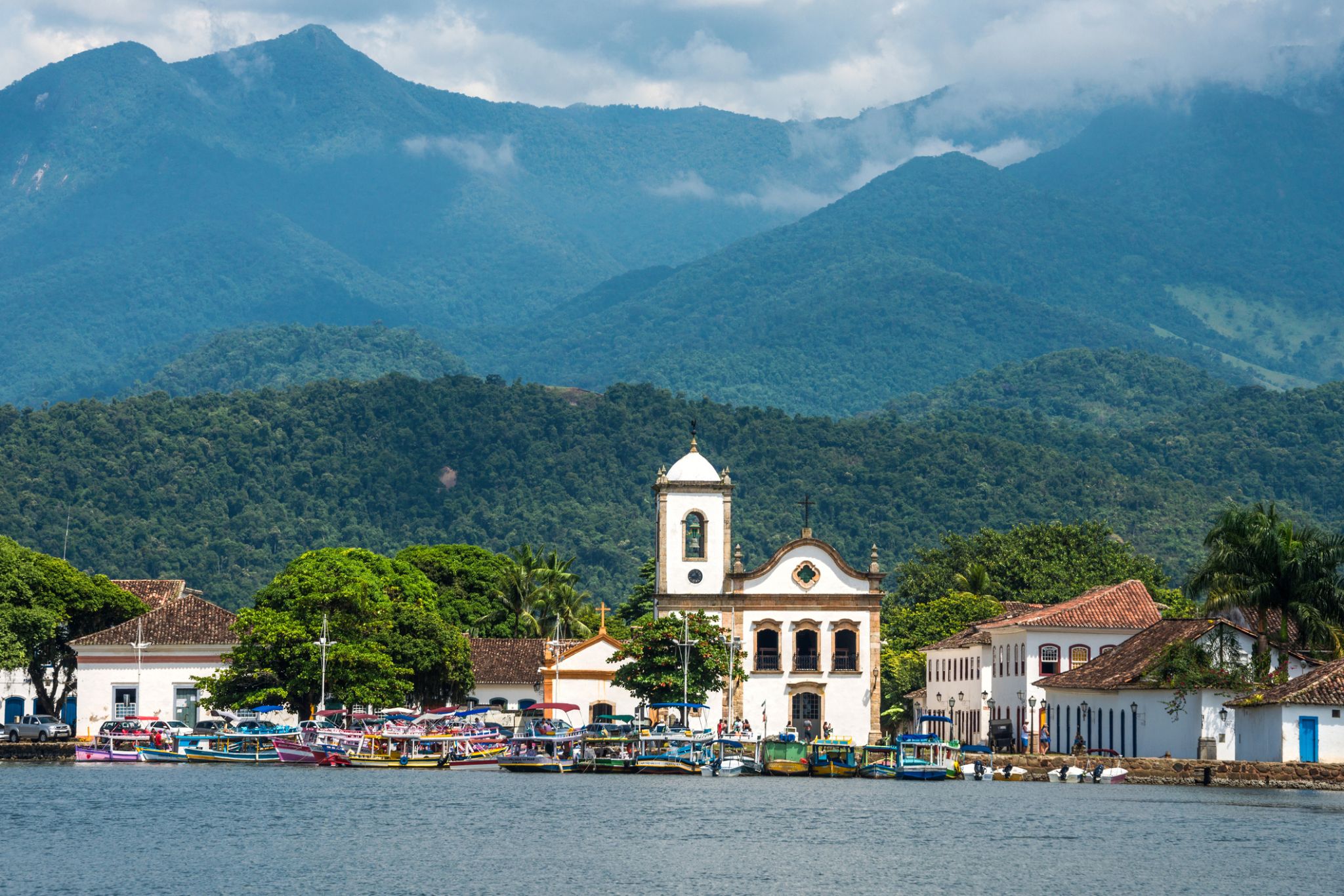
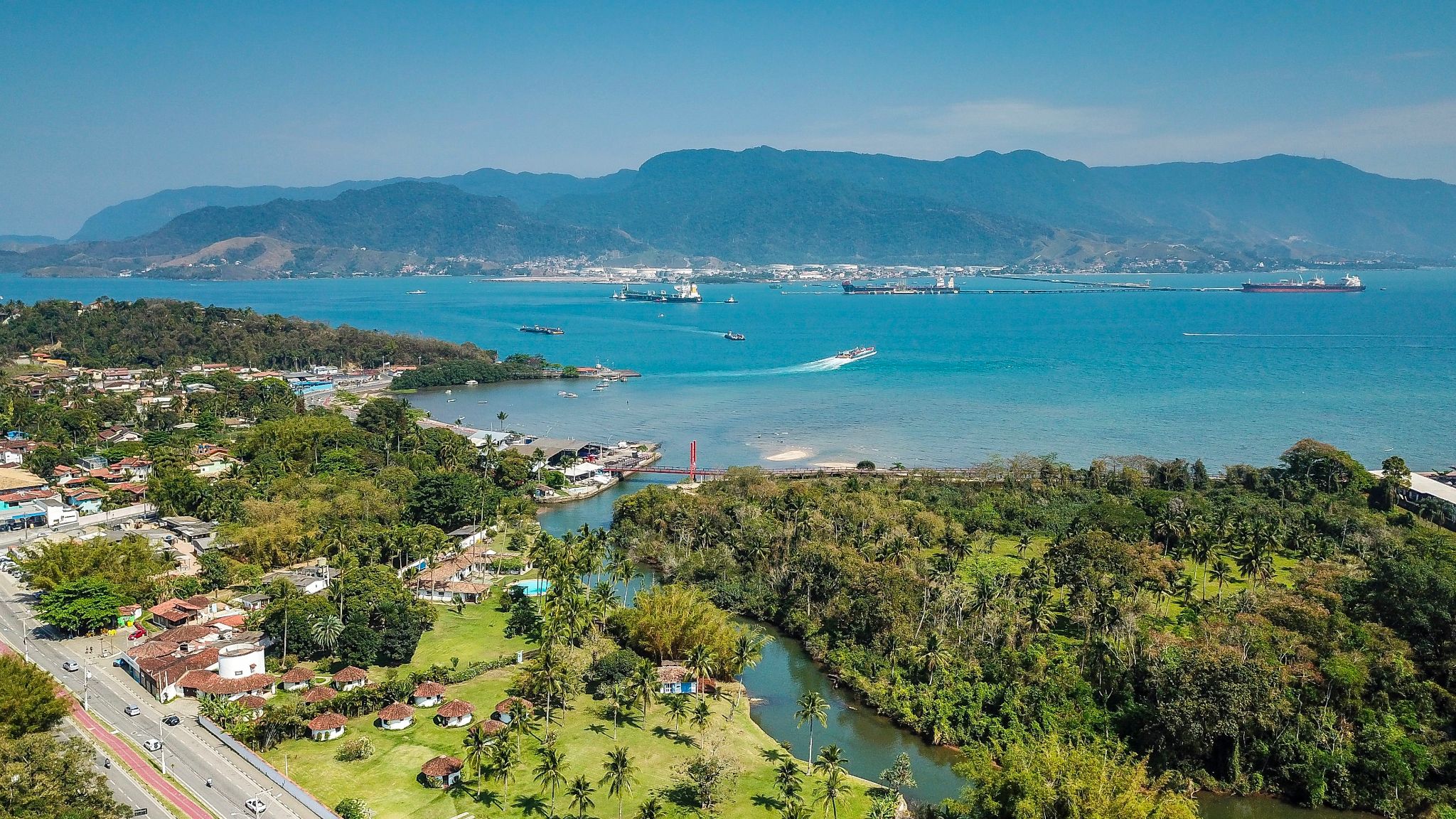
Ilhabela — brazylijski raj dla miłośników przyrody i przygód
Ilhabela to malowniczy archipelag i gmina w stanie São Paulo w Brazylii, składająca się z głównej wyspy i kilku mniejszych. Nazwa w tłumaczeniu z portugalskiego oznacza "piękna wyspa", co doskonale oddaje jej charakter. Ponad 80% terytorium wyspy jest chronione w ramach Parku Stanowego Ilhabela, obejmującego gęste lasy tropikalne, wodospady i szlaki turystyczne. To popularne miejsce wśród żeglarzy, nurków i osób szukających spokoju z dala od miejskiego zgiełku.
Ilhabela słynie nie tylko z plaż o złocistym piasku i krystalicznie czystej wodzie, ale także z unikalnej możliwości obserwacji wielorybów podczas ich migracji. Miasto często gości regaty żeglarskie, w tym międzynarodowe zawody. Turyści mogą zwiedzać zabytkowe budynki z okresu kolonialnego oraz cieszyć się atmosferą nadmorskich restauracji serwujących świeże owoce morza. Ilhabela łączy dziewiczą przyrodę, aktywny wypoczynek i spokojne tempo życia, czyniąc ją idealnym miejscem na podróż o każdej porze roku.
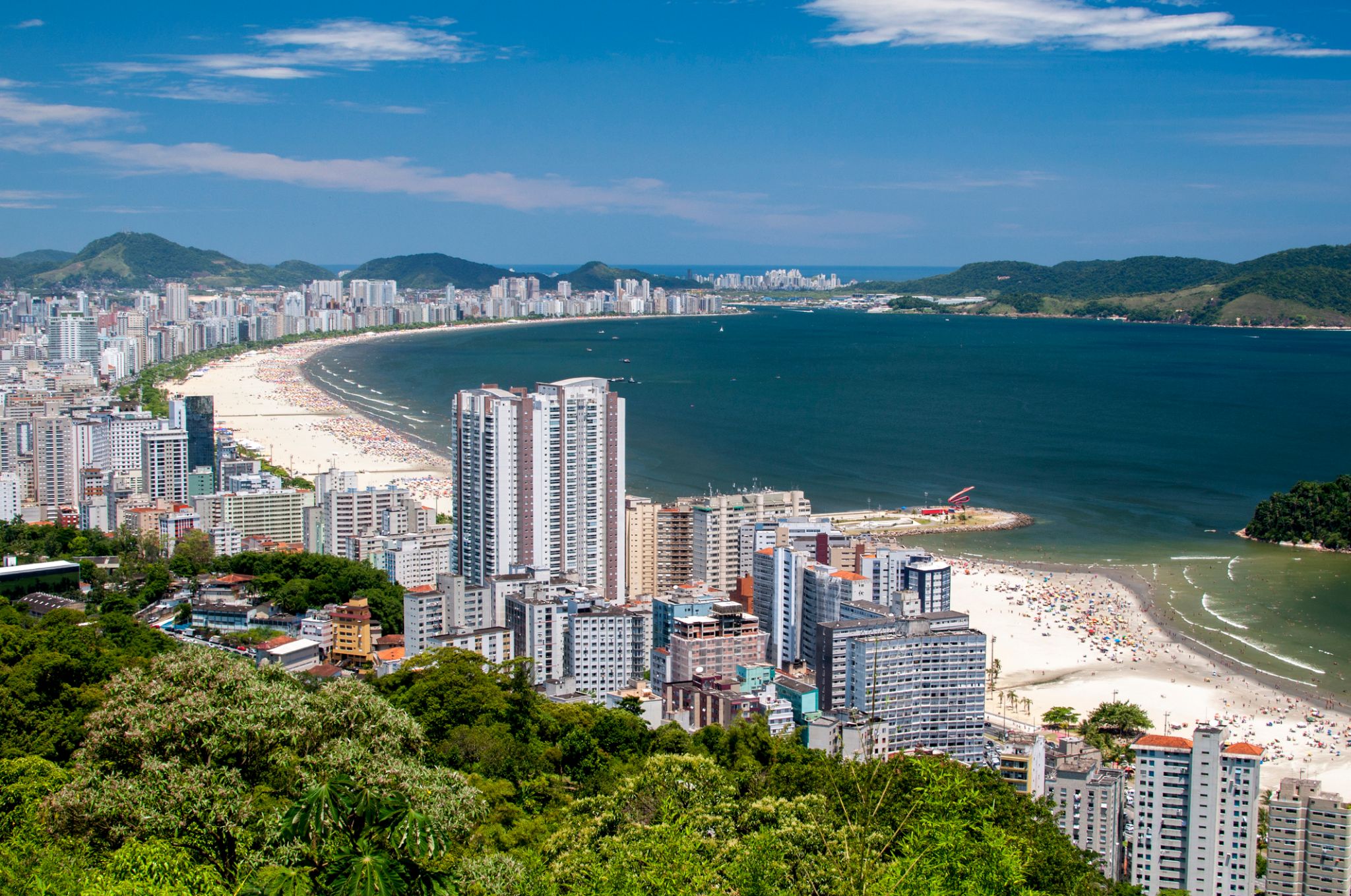


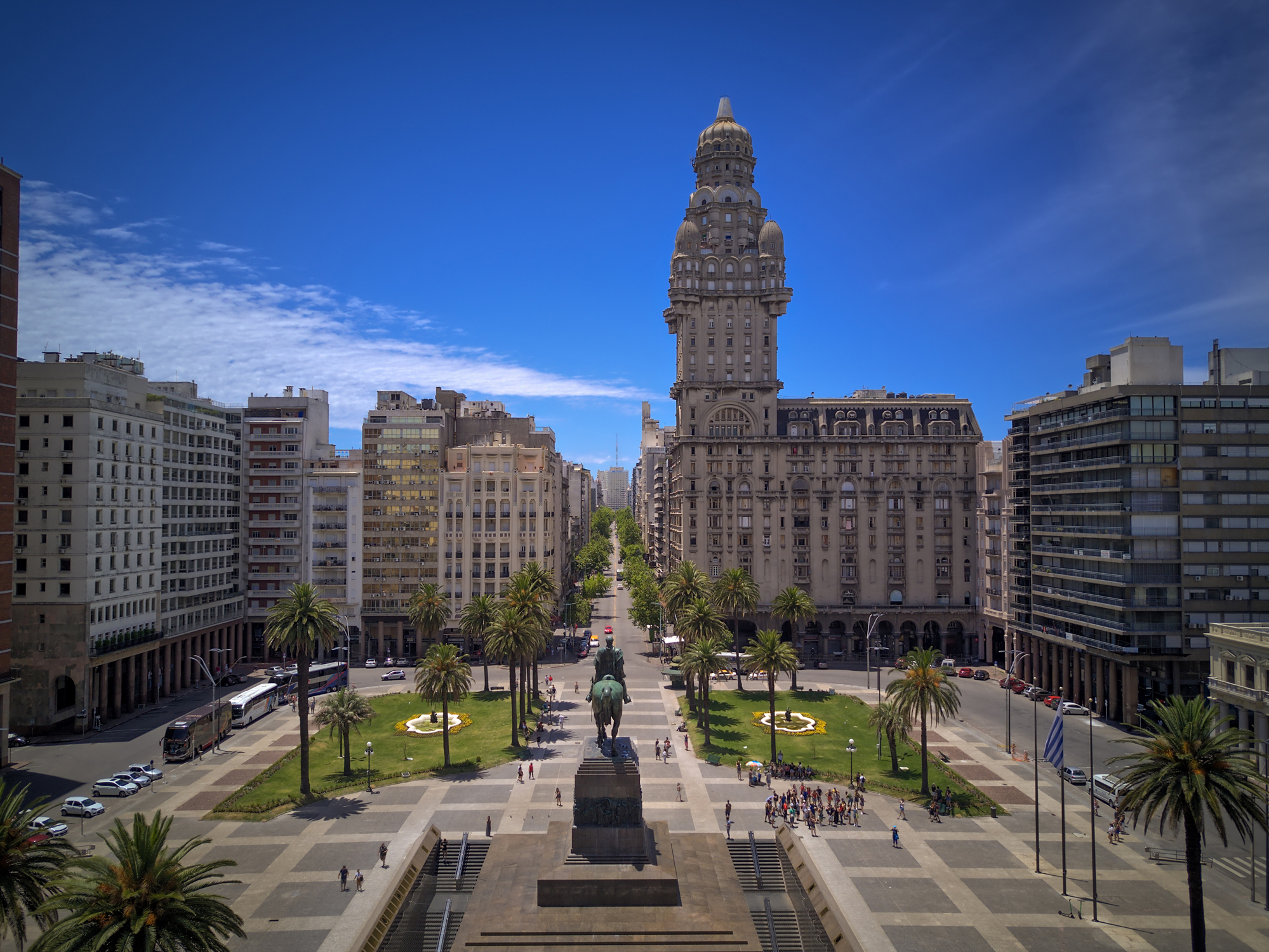
Montevideo is the capital and largest city of Uruguay. According to the 2011 census, the city proper has a population of 1,319,108 (about one-third of the country's total population) in an area of 201 square kilometres (78 sq mi). The southernmost capital city in the Americas, Montevideo is situated on the southern coast of the country, on the northeastern bank of the Río de la Plata.
The city was established in 1724 by a Spanish soldier, Bruno Mauricio de Zabala, as a strategic move amidst the Spanish-Portuguese dispute over the platine region. It was also under brief British rule in 1807. Montevideo is the seat of the administrative headquarters of Mercosur and ALADI, Latin America’s leading trade blocs, a position that entailed comparisons to the role of Brussels in Europe.
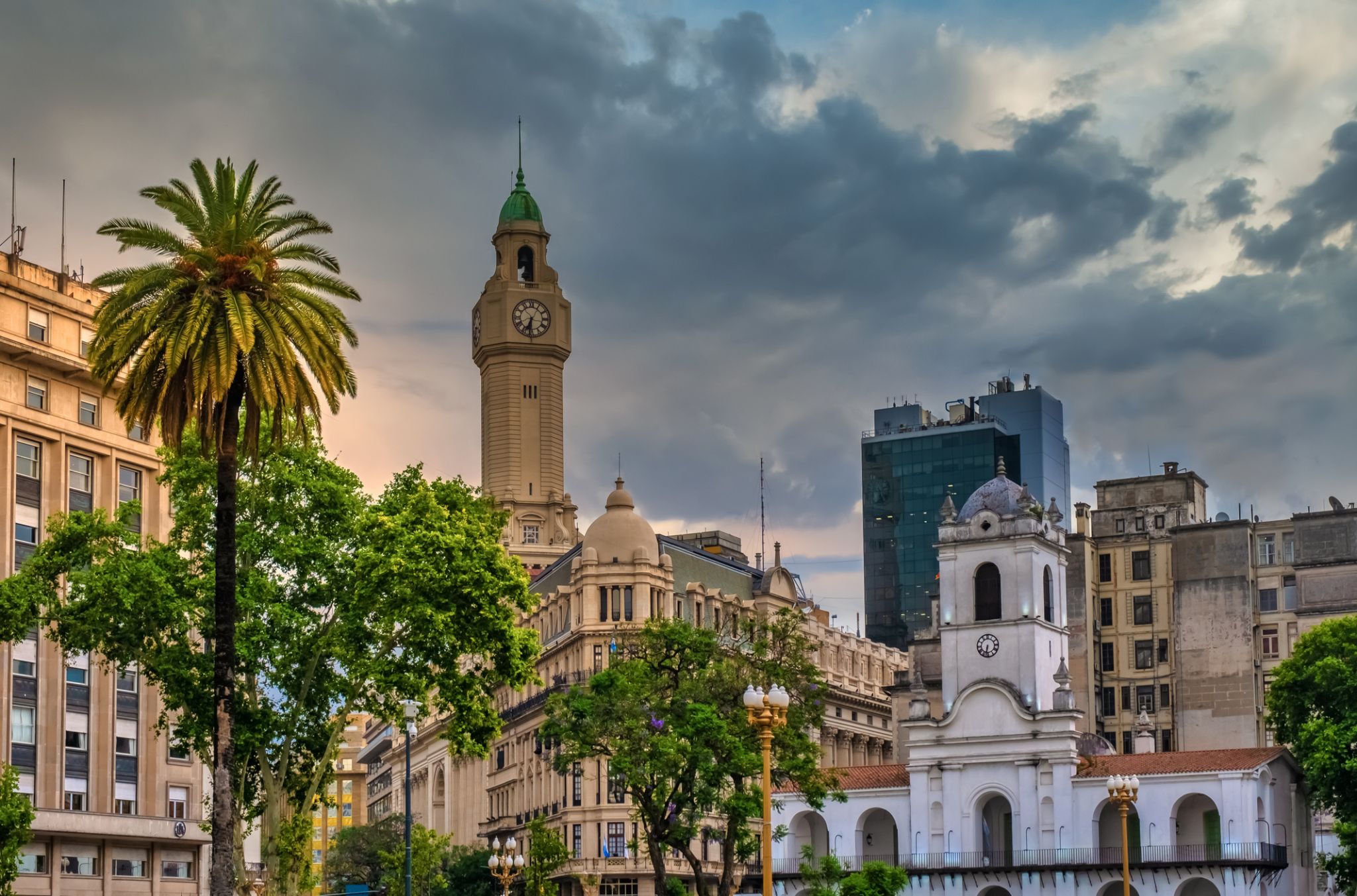
the capital city and chief port of Argentina, in the eastern central part of the country, on the Plata River; population 3,042,600 (est. 2008).

the capital city and chief port of Argentina, in the eastern central part of the country, on the Plata River; population 3,042,600 (est. 2008).